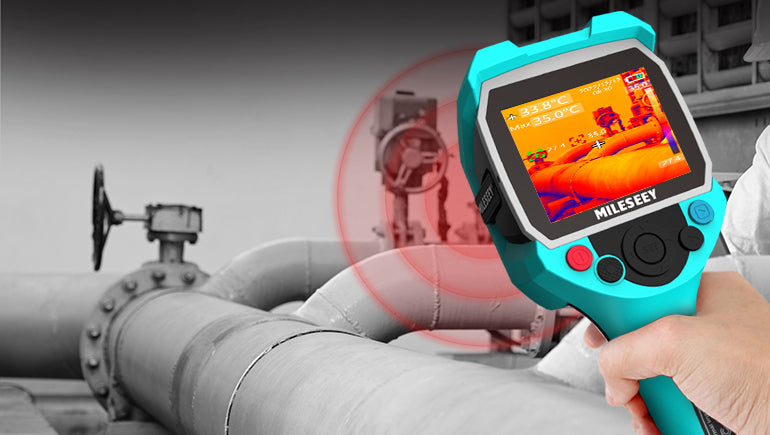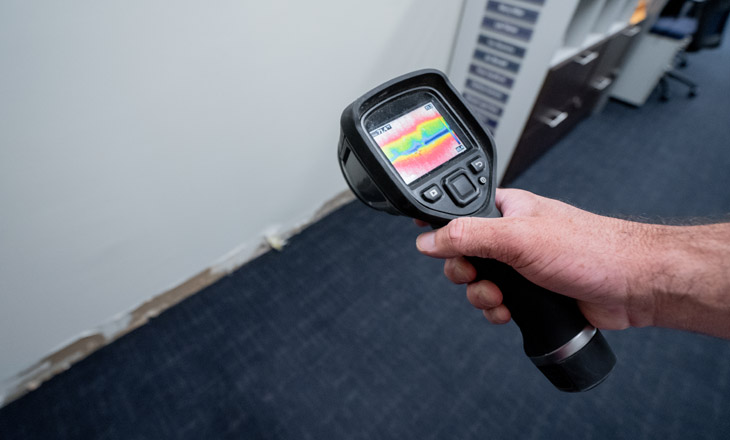Water Leak Detection: How to Identify and Fix Leaks Before They Create Damages
Water Leak Detection: How to Identify and Fix Leaks Before They Create Damages
Blog Article
Cutting-edge Solutions for Early Discovery of Water Leakages in Buildings and Framework
As the stability of structures and infrastructure is extremely important, the obstacle of early discovery of water leaks has actually spurred ingenious remedies that promise to transform the means we safeguard versus possible problems. From sophisticated leak discovery technologies to the implementation of IoT sensing units for real-time tracking, the landscape of leakage avoidance is advancing rapidly. Artificial intelligence algorithms offer a glance into the future of leak prediction, while thermal imaging offers a non-intrusive method for identifying hidden leaks. Automated water circulation analysis systems are improving exactly how leakages are recognized and resolved, paving the way for a positive strategy to water leak detection. Each of these options holds the vital to making sure the integrity and longevity of our built atmosphere, triggering a change in the direction of a much more lasting and effective future.
Advanced Leakage Detection Technologies
Advanced leak discovery technologies, equipped with cutting-edge sensing units and algorithms, play a vital role in swiftly identifying and pinpointing water leakages in different setups. Electromagnetic sensing units can identify modifications in electromagnetic fields created by water, using yet another layer of leakage discovery ability.

IoT Sensors for Real-Time Surveillance
In the world of modern-day water leakage detection, the combination of IoT sensors for real-time surveillance stands for a pivotal improvement in boosting positive leakage discovery capacities. These sensors provide constant surveillance of water supply, providing real-time data on water circulation prices, pressure variations, and temperature level adjustments. By leveraging IoT modern technology, these sensors can spot also the tiniest abnormalities in water use patterns, making it possible for very early recognition of possible leakages prior to they rise right into significant issues.
IoT sensors transmit data to a centralized platform, where advanced formulas assess the info and create alerts or notifications when irregularities are detected. This real-time monitoring capability allows residential property proprietors or facility managers to promptly address leakages, decreasing water damages, minimizing repair work prices, and preserving water sources.
Additionally, IoT sensors can be integrated with structure administration systems, permitting automatic reactions to spotted leaks, such as closing off water valves or activating pumps to mitigate the influence of leaks. In general, the implementation of IoT sensing units for real-time tracking considerably boosts the performance and efficiency of water leak discovery in buildings and infrastructure.
Artificial Intelligence Algorithms for Leak Forecast

One secret benefit of using artificial intelligence for leakage forecast is its capability to continuously find out and enhance its precision over time. As even more information is collected and fed right into the formula, it can fine-tune its predictions and adjust to altering conditions, eventually increasing the integrity of leak discovery systems.
Additionally, maker learning formulas can assist in recognizing refined signs of leakages that might go unnoticed by typical tracking approaches. water leak detection. By examining complicated information embed in real-time, these formulas can provide very early over here warnings and notifies, permitting for timely treatment and precautionary upkeep to reduce possible water damage and connected prices
Using Thermal Imaging for Leakage Detection
Thermal imaging innovation uses a promising approach for spotting water leakages in different systems and frameworks. By utilizing infrared radiation and temperature variances, thermal imaging cameras can determine concealed leakages that are not conveniently noticeable to the nude eye.
One of the essential advantages of thermal imaging for leak discovery is its non-intrusive nature. Generally, the use of thermal imaging technology enhances the performance and precision of water leak discovery, making it a beneficial device for maintaining the honesty of structures and infrastructures.
Automated Water Flow Evaluation Solutions
How can computerized water flow evaluation systems reinvent wikipedia reference the detection and monitoring of leaks in various systems and frameworks? Automated water flow evaluation systems provide an aggressive method to leakage detection by continually monitoring water circulation rates and patterns. By developing standard data, these systems can promptly determine inconsistencies that may show a leak, allowing punctual intervention to avoid comprehensive damages.
These systems utilize sophisticated formulas to evaluate real-time information and give immediate informs when abnormalities are discovered, enabling swift activity to be taken. In addition, automated water flow evaluation systems can be incorporated with building administration systems or IoT systems, boosting overall effectiveness and enabling remote monitoring abilities.
Furthermore, the data collected by these systems can be utilized for anticipating upkeep objectives, aiding to recognize potential powerlessness in the infrastructure before leakages take place. On the whole, the execution of computerized water circulation evaluation systems can dramatically boost leakage discovery and administration methods, eventually resulting in cost financial savings, lowered water wastefulness, and boosted sustainability in structures and facilities.

Verdict
To conclude, the integration of sophisticated leakage discovery modern technologies, IoT sensing units, artificial intelligence algorithms, thermal imaging, and automatic water circulation evaluation systems uses ingenious solutions for very early discovery of water leaks in structures and facilities. These innovations make it possible for real-time surveillance, forecast of leakages, and effective detection techniques to avoid water damage and wastage. Implementing these solutions can help in maintaining the additional hints honesty and sustainability of water supply in numerous setups.
Report this page